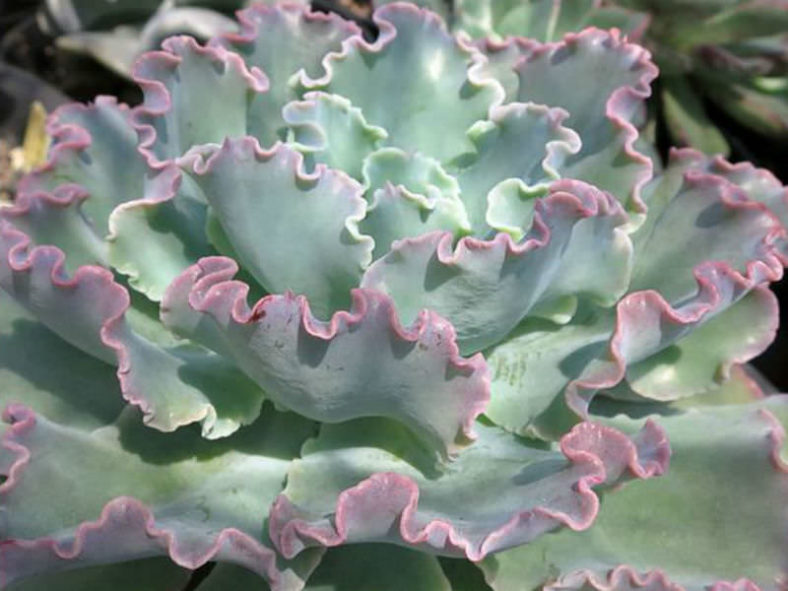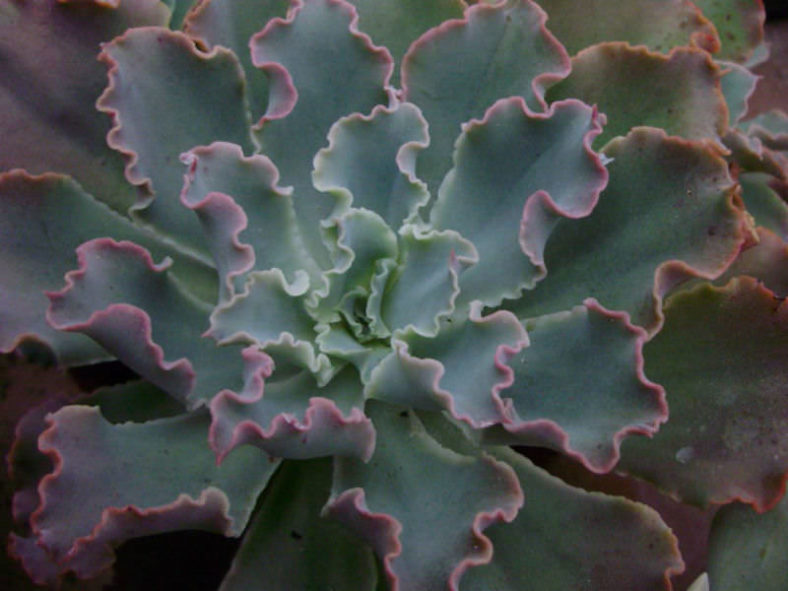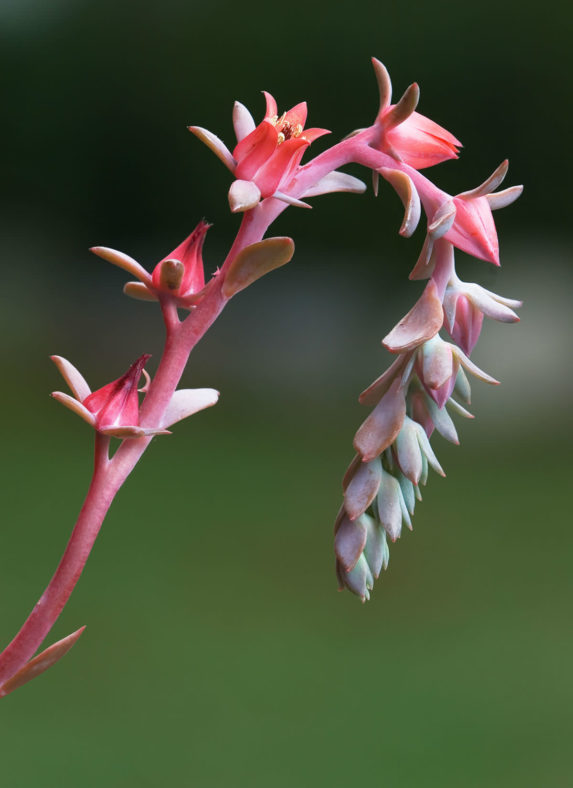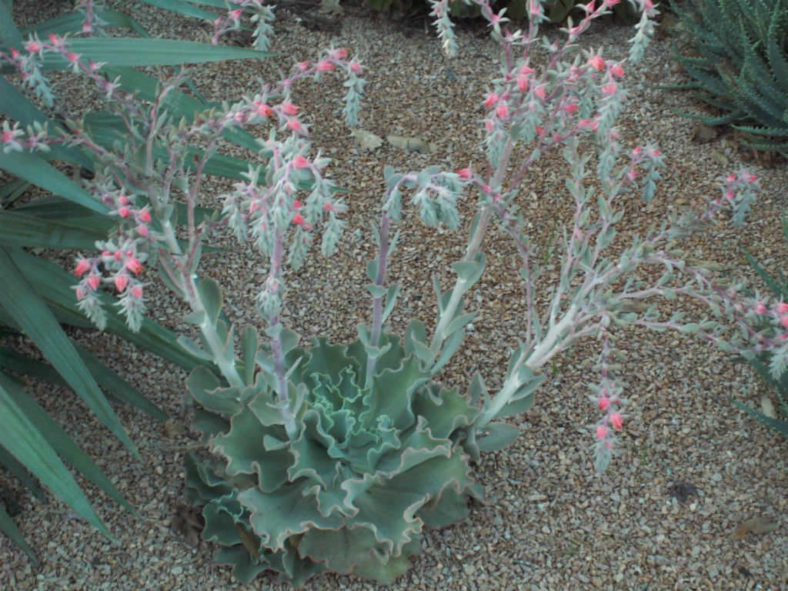Scientific Name
Echeveria 'Blue Curls'
Scientific Classification
Family: Crassulaceae
Subfamily: Sempervivoideae
Tribe: Sedeae
Genus: Echeveria
Origin
Echeveria 'Blue Curls' is a hybrid noted as the sister seedling to another well-known hybrid Echeveria 'Blue Waves'. It is presumed to be an Echeveria gibbiflora hybrid created by Frank Reinelt. EC descriptions of E. 'Blue Curls' and E. 'Blue Waves' suggest that the names are used inversely in Europe. So, it is unknown what the correct use would be.
Description
Echeveria 'Blue Curls' is a beautiful succulent plant with a typically solitary rosette of powdery blue-green, wavy leaves that take on a pink hue in spring and fall. The rosette can reach a diameter of 12 inches (30 cm). The leaves become wavier as they age.
The flowers are reddish-pink, well-spaced along with long stalks, and appear in summer.

Hardiness
USDA hardiness zones 9b to 11b: from 25°F (-3.9°C) to 50°F (10°C).
How to Grow and Care
Most common Echeveria species are not complicated succulents to grow, provided you follow a few basic rules. First, be careful never to let water sit in the rosette, as it can cause rot or fungal diseases that will kill the plant. Additionally, remove dead leaves from the bottom of the plant as it grows. These dead leaves provide a haven for pests, and Echeverias are susceptible to mealybugs. Finally, as with all succulents, maintaining careful watering habits and providing ample light will help ensure success.
Repot as needed, preferably during the warm season. To repot a succulent, ensure the soil is dry before repotting, then gently remove the pot. Knock away the old soil from the roots, removing any rotted or dead roots. Treat any cuts with a fungicide.
Most Echeverias can be easily propagated from leaf cuttings, although some are better from seeds or stem cuttings. To propagate a leaf cutting, place the individual leaf in potting soil for succulents and cover the dish until the new plant sprouts.
Learn more at How to Grow and Care for Echeveria.
Links
- Back to genus Echeveria
- Succupedia: Browse succulents by Scientific Name, Common Name, Genus, Family, USDA Hardiness Zone, Origin, or cacti by Genus
Photo Gallery
Click on a photo to see a larger version.


